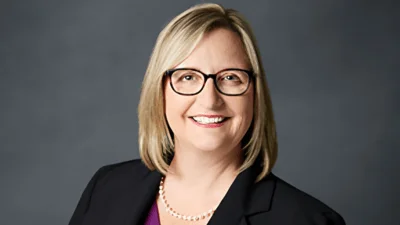Cancer screening recommendations and what can affect them | https://www.osfhealthcare.org/blog/wp-content/uploads/2022/12/321946662_2595578560615563_6205675444898556455_n-765x310.jpg
Cancer screening recommendations and what can affect them | https://www.osfhealthcare.org/blog/wp-content/uploads/2022/12/321946662_2595578560615563_6205675444898556455_n-765x310.jpg
Cancer has become a part of our lives. With so many probable causes, it seems impossible to avoid. Living a natural lifestyle and staying physically fit are our best defenses for prevention. However, we still need to monitor our bodies for any changes.
The problem – changes to our bodies usually happen slowly. Whether it be chronic conditions like heart disease, diabetes or cell changes like cancer, it can be difficult to recognize any signs or symptoms associated with the change.
“Almost all common cancers have minimal to no symptoms at earlier stages,” said Manpreet Sandhu, MD, hematologist and medical oncologist at OSF HealthCare. “For example, a small polyp in the colon does not cause any symptoms until it turns into a tumor large enough to cause problems with bowel movements or bleed into the stool.”
At what age we should be screened depends on our average risks and exposures to cancer-causing substances.
Age
Cancer screening recommendations are benchmarked on age because older adults have increased chances of cancer. If we have additional risk factors, the recommended age for certain screenings is lowered.
General screenings start around age 50. However, some screenings begin earlier because of increased cases at younger ages. Screening mammograms begin at age 40, while colorectal cancer screening tests now should start at age 45.
“The incidence of most common cancers, namely the risks of breast cancer, colon cancer, prostate cancer and lung cancer, increases with advancing age,” Dr. Sandhu said. “Age makes a good starting point for us to base recommendations.”
Genetics
A family history of cancer can mean you are more susceptible, especially if you have two relatives on the same side of the family. Your gender can play a role as well. Some common hereditary and gender cancers include:
- Breast
- Colon and rectum
- Ovarian
- Pancreatic
- Prostate
- Uterine
“Men should have their prostate exams, women should get a pap test for cervical cancer screening, and both genders should keep up on clinical breast exams and breast cancer screenings if there is a family history.”
Genetics is something to keep in mind, but you don’t have to live in fear if someone in your family has cancer. One out of three people develops some form of cancer in the United States. Some cancers can run in families because of shared lifestyles and are not genetically passed.
Increased exposure or medical conditions
Certain cancers are more common in people with high-risk exposures to certain manufacturing chemicals, smoking, poor diet or medical conditions. When our bodies are under stress from cleaning out chemicals or fighting health conditions, it weakens our immune systems, giving cancer a foothold.
“For example, people with a significant smoking history, typically greater than 15 years or a pack a day, should be screened for lung cancer screening,” Dr. Sandhu said. “People with underlying liver disease are more likely to develop liver cancer, hence screening with ultrasound or low-dose CT scans is recommended.”
If you fall into any of these categories, talk to your health care provider to learn when you should start screenings.
“Many times, people, especially people who feel healthy, skip screenings or avoid their doctor until something gets their attention,” Dr. Sandhu said. “By then, a situation that could have been treated easier has worsened.
“Being healthy and managing your risks is not enough. You need to keep up with your screenings, too.”
Why are cancer screenings important?
Cancer screenings help identify cancers early, and early detection means more treatment options and improved chances for successful treatment with fewer side effects.
“For instance, when breast cancer is identified at Stages 1 or 2, the chance of 5-year survival is greater than 90%,” Dr. Sandhu said. “However, if it is diagnosed at advanced Stage 4, the chance of 5-year survival goes down significantly to about 30-40%.”
Early-stage detection also gives you more control, allowing you to make nutritional and lifestyle changes. Having this opportunity to make adjustments early makes these changes more effective.
Being informed about health and cancer risks helps us advocate for ourselves and stay on top of our screenings. We can also use it for motivation to make lifestyle changes known to reduce cancer risks.
Original source can be found here






 Alerts Sign-up
Alerts Sign-up